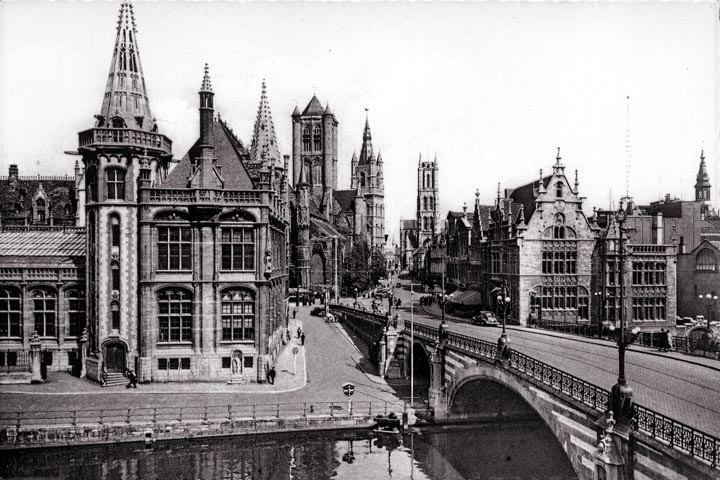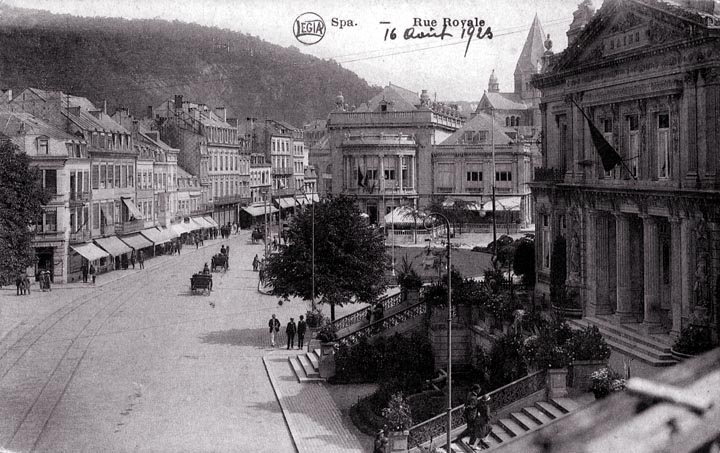
This is a remarkable and gorgeous collection of spires, with most of the buildings that carry them fronting on this major street. The street itself wiggles around for a considerable distance without going out of sight. This makes the area quite open (while still enclosed), but that seems appropriate given the comparatively large scale of the buildings. This was never an intimate space, nor was it intended to be. This street is a statement of power, wealth, and religious faith.
Notice the prominent building in the foreground. It is set up almost like a modest house, with just four windows in the gable. These windows have then been artfully broken up into smaller sections. There's nothing about this that is a lie - the viewer sees immediately that it is a large building, and there is nothing deceptive about the scale. Rather, the general arrangement of the building has been kept simple, but the series of scales used in elaborating the windows has given us a complete range of scales from the largest to the smallest. Nikos Salingaros has done work on the fractal nature of architecture and has concluded that good buildings exhibit a spectrum of scales with no large gaps. Most Modern buildings have large discontinuities in the range of scales, which is one of the important things that is wrong with them.
Notice that the street has had to be raised in order to provide access to the bridge, which must be far enough above the water to permit vessels to pass beneath. This has the unfortunate effect of blocking the view across the street for quite some distance. I myself have never cared from the kind of striped courses of masonry used in the bridge, although this pattern is seen fairly often in old structures in Europe. I find that the sharp color contrast obscures the real form of the object.
|
 Next City Design Home
E-mail |